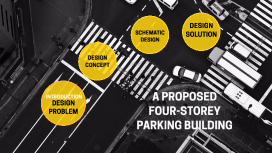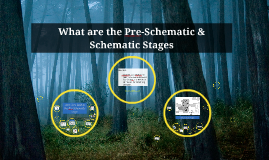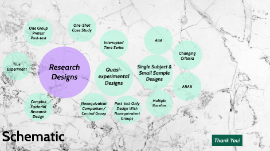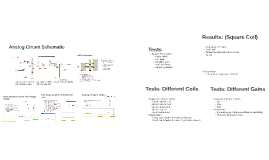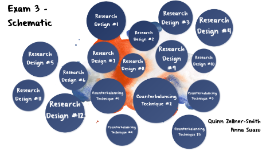Pre-Schematic & Schematic Stages
Transcript: Children in the pre-schematic stage don't pay as much attention to color as they do form; there's not as much meaning for them. With their ability to make forms of their own choosing, it takes priority on their thinking. Starts around 7 and lasts to about 9 years-old In this stage, children develop schema, which is a symbol for what they portray for an object (person, house, etc.) It's the same every time Parents, keep in mind that communication is important! Looks like objects are drawn randomly If you look close enough, you'll be able to see "children conceive space as to what is around them" (Lowenfield, 225). Children can't relate location of objects based on landmarks yet A child will learn spacial concepts by personal involvement. First, let's look at the Pre-Schematic stage. "Although it's not clear how the personal symbol originates, the universality of the circle for the head and the two lines representing legs gives support to the notion that this is somehow biological in nature...all children, either through sight, hand control, or cognitive development, make similar configurations for a person" (Lowenfeld, 223). Encourage short discussion for perceptual growth by pointing things out and you will see it in the drawings! *Basic subject matter stresses an awareness of body parts! Choosing colors is highly individualized MOTIVATE!!! The Way out "Through drawing, a child will begin to develop conceptual growth" (Lowenfeld, 234). This is where visual differentiation and perception begins: The higher the student's differentiation is, the higher their intellectual processes are developed which both increase awareness to the environment The more detailed drawings will be seen Children also start to show their understanding of scale and notice small changes in their figure drawings. Same schema, but eyes, hair, and size are different Meaning of Space: Children start to use BASE LINE, or TRAVEL LINE, creating a relationship between he/she and the environment. What is base line? Children develop concept and their drawings of the head-feet now consist of recognizable figures with clothing instead of just bodies. Emotion (what they feel represents the mood of the object) Psychological meanings such as a crayon being in better condition because it hasn't been used for a paintbrush having a longer handle Children who have developed more intellectually overall are more physically developed. The pre-schematic stage starts around 4 years-old and lasts until around 7. Children begin drawing head-feet representations of how they see people, usually themselves. Demonstrates the beginning of an ordered thought process Have the right atmosphere Child discovers naturally there's a relationship between colors and objects Draws the environment more objectively and uses well developed space relationships Can categorize to group things together (Lowenfeld, 267). Schematic Stage Base Line Drawing Toward the end of the Schematic stage, drawings are increasingly influenced by visual perception. Now for the big turn in events... Kyle Underwood Resource: Lowenfeld, V., & Brittain, W. (1987). Creative and Mental Growth (8th ed.). New York, NY: Macmillan Publishing Company. Color: "Active knowledge reveals understanding of and interest in the environment around and this is what is expressed in drawings" (Lowenfeld, 286). What are the Pre-Schematic & Schematic Stages It's when the student draws along the bottom of the page, illustrating a story and showing the ground; drawing in linear! Children begin to represent something: Drawings as a Reflection of Growth Growth in Drawings:






